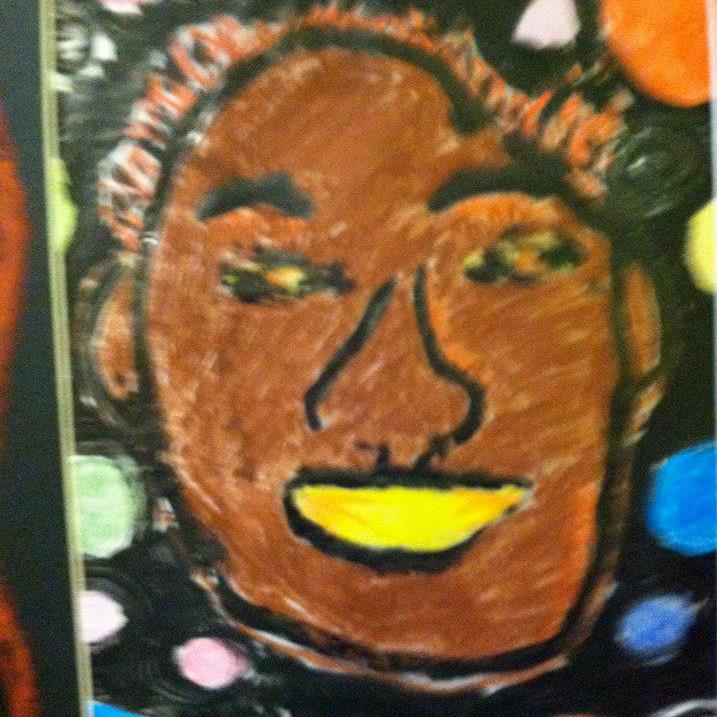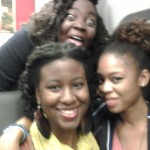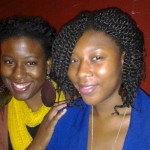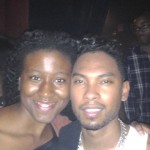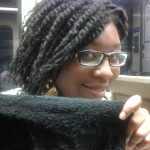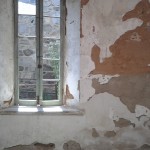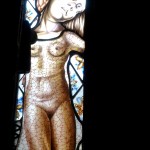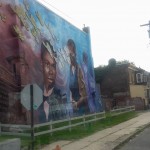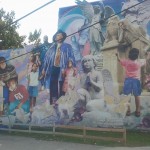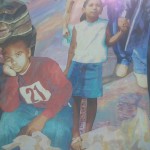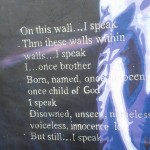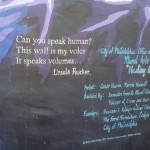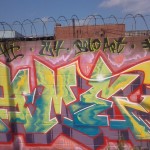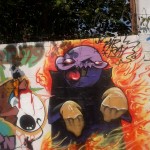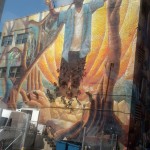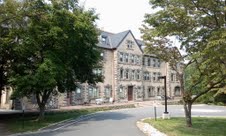I wrote a blog post that would capture how heavy I have been feeling this past week about being an English speaking Haitian-American woman who grew up in a bilingual house. Then, I deleted it all. As I re-read what I wrote, I realized that my sentiments were no different from the ones I expressed in the college essay that got me into this great institution. Therefore, it bothered me a lot to know that I am still grappling with the same identity-related questions from two years ago. This realization does not speak to my inability to grow and to own my Haitian identity because I have in ways that I am not able to articulate—I simply feel it. But it does speak to the amount of personal-growth that still needs to be done—i.e. no more feeling like I am not 100% Haitian, no more feeling like I have to be fluent in the language to be a part of the culture, and no more feeling like I have to prove to anyone but myself that I can claim the culture.
So, in sharing my college essay from two years ago, I am making myself vulnerable to my deepest embarrassment and greatest pride: being Haitian. It is my hope that others will read, relate and realize their own battle with cultural identity no matter their cultural background.
Esteniolla Maitre
Personal Essay for Bryn Mawr College
November 11, 2010
“Again.”
“Bon-di . . . e deee. Se poo lime fet- . . .”
“Esteniolla you are saying it wrong. Again.”
“I’m trying! Bon-die dee. Se poo lime- . . .”
“Wrong.”
I looked down as my mother’s weathered bible shook in my hands. My eyes filled with tears and the Haitian phonetics blurred from sight.
“We can try again t-t-t-tomorrow Mommy. I’m done,” I choked.
“Ou mèt ale.”
I fled up the stairs to my room, slamming the door with force: BANG! The sound reverberated through the wooden floor, my body, and my heart. I was embarrassed. I hated being forced to learn Kreyòl . Numerous times, I sat before my mother, clutching the book of God, failing to stress syllables, tripping over my tongue, ending each session with the scriptures splotched with tears. My mother did not understand why her language did not run through my blood and spill fluently from my mouth in its musical French phrases.
I did not expect her to understand for I had told no one about the brutal bullying I received from kids at school. To them, Haitians, Haitian-Americans, recent Haitian immigrants were all social pariahs and targets of ridicule. Even when my skin blended with the dark shades of my peers — my school community was about 80 percent African American, Cape Verdean, and Latinos — a bully would always single me out on the playground with “Hey, I found a Haitian!” I soon learned that we Haitians were spotted by what we wore (Sunday best clothing even if it was not Sunday), smelled like (supposedly like the fisheries boarding Haiti’s peninsula), and our coarse, thick hair (which the bullies said, “broke mad combs!! Hahahaha!!!”). Negative remarks about my culture struck me like lashes on my back. I was scarred. I got their message: being Haitian was dirty, despicable, and shameful. So, I dropped the culture like a bad habit and conformed to please my bullies. I dressed in the latest fashions, followed the latest fads, sprayed on extra perfume, relaxed my hair, even adopted the Hispanic culture as my own — anything to rid myself from being Haitian.
Years later, these experiences led me to protect myself but also taught me to sympathize with other kids who have been much less fortunate than I — Phoebe Prince from North Hampton, Carl Joseph Walker-Hoover from Springfield, and Tyler Clementi, whose roommate “outed” him with a live video — a humiliation that led him to jump off of the George Washington Bridge. I wondered if, in hiding my identity back then, I was being courageous. . . or cowardly.
Only when alone in my room, either after a grueling Kreyòl lesson or a horrible day at school, I allowed myself to feel the guilt and shame that came with hiding. I knew that erasing my culture was hurting my mother and eroding my identity, but I was not yet strong enough to own that part of me. Instead, I spent countless nights masking my hurt by reading books. I devoured Mildred D. Taylor, Tupac Shakuar, and Maya Angelou, all of whom wrote about characters of color struggling to come to terms with themselves. I empathized with Paul-Edward from The Land, as he dealt with feelings of alienation growing up as a bi-racial teenager in post-slavery Mississippi. In “The Rose Who Grew from Concrete,” by Tupac Shakuar, I was the beautiful rose who was fragrant, not malodorous, when sniffed, who broke from the concrete layers of guilt, shame, and embarrassment to immerse herself in the sun rays of self- and social acceptance. When my imagination ran empty, I delved into the life of poet, Maya Angelou. As “a caged bird,” I longed to free myself from my own fears of rejection, to free my bullies from their ignorance, and to fly to a place where they do more than give lip service to diversity
As I read more books, the stories were no longer words on paper, they were me. I grew braver with each character I met, knowing that I, too, would not tolerate discrimination and would declare my identity to my bullies without fear. To this day, my journey toward self-acceptance is ongoing, but I am comfortable with being a young woman of Haitian descent. Freed from shame, I have immersed myself in Haitian literature by the Haitian author, Edwidge Danticat, a woman who has also faced adversity for being Haitian, and writes beautifully about Haiti’s courage and strength despite years of federal corruption and poverty. In Krik? Krak!, a collection of stories, Danticat writes about the courage of Haitian women, in particular, and how, despite the government’s collapse, they hold family and life together. In one story in particular, a girl named Grace, whose family is living in America, has to negotiate between her mother’s traditional values and her own American identity. This captured my dilemma exactly and gave me a model that showed me that I’d be forever centered in the middle of two identities — part Haitian and part American.
I had this epiphany about identity while a student on a thirty-day scholarship trip to Oaxaca, Mexico, where I explored the arts and the culture. While there, I also discovered a world filled with cultural festivities, delicious food, welcoming families, generous individuals, and a life of contentment. I was there and had learned Spanish, thinking it would replace the culture I tried to erase for years. Of course, I was absolutely wrong. Sitting in the green garden of the Arte Institute del Oaxaca, I thought about Krik? Krak! and the fact that I was not Hispanic — that as beautiful as this culture and language was, it was not my culture. For me to experience a similar feeling of contentment, I had to have the courage to accept myself as Haitian.
Now, I want to read, write, speak, and learn to love the language of my mother. I want to share the knowledge I’ve gained: that “hiding from bullies” is a form of self protection, which can keep you safe for a while — but that ultimately; you have to find the courage to accept who you are. If I were to meet my bullies today, I’d say, “Yes, I am Haitian!” And with my education, I plan to find ways to bring my self-acceptance to the people of Haiti, to witness their courage in the face of recent calamities, to help them rebuild their bodies, lives, and enjoy their beautiful culture. I have always been called a leader and I plan to devote my energies to do something useful in the world — and I can think of no better place for my work than Haiti.
Until I find myself an institution that understands women of courage, and will help me accomplish my goals — and I feel that Bryn Mawr is that institution above all others — I am comfortable with the company of my books, with the memories of Oaxaca, with learning everything I can about Haiti from the news, and with reciting the bible in Kreyòl to my mother.
“Bondye di, ‘se pou limyè fèt.’ Epi limyè te fèt!” I declared.
My mother smiled and translated: “God said, ‘Let There Be Light,’ and then there was light.”

